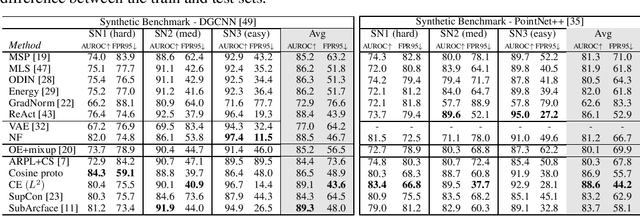Towards Open Set 3D Learning: A Benchmark on Object Point Clouds
Paper and Code
Jul 23, 2022



In the last years, there has been significant progress in the field of 3D learning on classification, detection and segmentation problems. The vast majority of the existing studies focus on canonical closed-set conditions, neglecting the intrinsic open nature of the real-world. This limits the abilities of autonomous systems involved in safety-critical applications that require managing novel and unknown signals. In this context exploiting 3D data can be a valuable asset since it conveys rich information about the geometry of sensed objects and scenes. This paper provides the first broad study on Open Set 3D learning. We introduce a novel testbed with settings of increasing difficulty in terms of category semantic shift and cover both in-domain (synthetic-to-synthetic) and cross-domain (synthetic-to-real) scenarios. Moreover, we investigate the related out-of-distribution and Open Set 2D literature to understand if and how their most recent approaches are effective on 3D data. Our extensive benchmark positions several algorithms in the same coherent picture, revealing their strengths and limitations. The results of our analysis may serve as a reliable foothold for future tailored Open Set 3D models.
 Add to Chrome
Add to Chrome Add to Firefox
Add to Firefox Add to Edge
Add to Edge